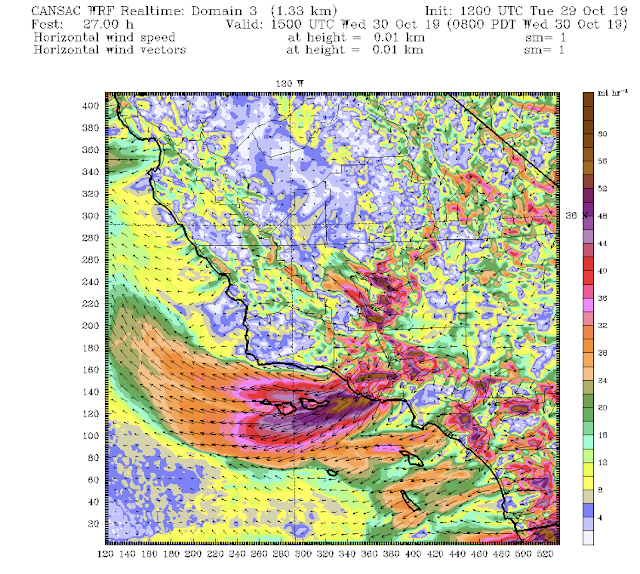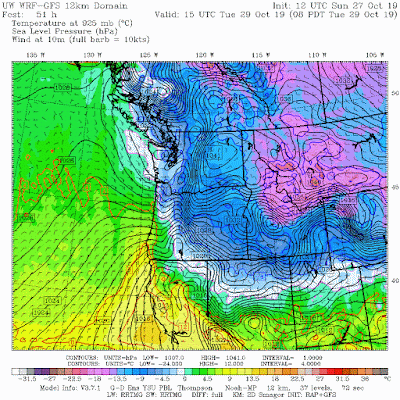The real climate debate is not between "believers" and "deniers".
And not between Republicans and Democrats.
The real debate is certainly not over whether global warming, spurred by increasing greenhouse gases, is a serious problem that must be addressed. Both sides of the real climate debate agree on that.
The real rebate is between two groups:
1. A confident, non-political group that believes technology, informed investments, rational decision making, and the use of the best scientific information will lead to a solution of the global warming issue. An optimistic group that sees global warming as a technical problem with technical solutions. I will refer to these folks as the ACT group (Apolitical/Confident/Technical)
2. A group, mainly on the political left, that is highly partisan, anxious and often despairing, self-righteous, big on blame and social justice, and willing to attack those that disagree with them. They often distort the truth when it serves their interests. They also see social change as necessary for dealing with global warming, requiring the very reorganization of society. I call these folks the ASP group (Anxious, Social-Justice, Partisan).
There is no better way to see the profound difference between these two groups than to watch a video of the testimony of young activists at the recent
House Hearing on Climate Change, which included Greta Thunberg, Jamie Margolin, Vic Barrett, and Benji Backer.
Jamie Margolin of Seattle talked about an apocalyptic future, with "corporations making billions" while they destroy the future of her generation. Of feeling fear and despair. Of a planet where the natural environment is undergoing collapse, where only a few years are left before we pass the point of no return, and where only a massive political shift can fix things, including the Green New Deal.
Watch her testimony to see what I mean.
Compare Ms. Margolin's testimony to that of University of Washington senior Benji Backer.
Mr. Backer, leader of the American Conservation Coalition, a conservative/moderate group of young people supporting action to protect the environment, approaches the problem in a radically different way. Instead of despair, there is optimism, recommending more scientific and technical research, a bipartisan attack on the problem, a rejection of an apocalyptic future, the building of new energy industries with potential benefits for the American economy, and a dedication to follow the science and not political expediency. His testimony is
here.
Both Ms. Margolin and Mr. Backer care deeply about the environment and want effective measures to deal with global warming.
Both their approaches and attitudes could not be more different.
We see the difference between the optimistic ACT group and the despairing ASP folks here in Seattle.
On one hand, there is the
Clean Tech Alliance, which brings together technology companies, university researchers, and the business community to develop and apply the technologies that will produce the carbon-free future we look for. Headed by Tom Ranken, the Alliance does a lot, including a highly informative breakfast series where you can learn about fusion power, new battery technologies, the future of solid waste recycling, and much more. Non-political, optimistic, and exciting.
These are clearly members of the ACT group.
In contrast, there is
Seattle's 350.org group. They are into climate strikes, staging protests (like their recent blockade of a branch of Seattle Chase Bank), trying to muzzle climate scientists they don't like, advocating political solutions to greenhouse warming (Green New Deal), pushing divestment of energy companies, and even a
Pledge of Resistance to stop energy exports
by whatever means necessary. Their "science" page has all kinds of extreme (and unfounded) claims regarding global warming impacts, like a sea level rise of 10 feet in as little as 50 years.
ASP group all the way.
I should note that the Seattle 350.org group and their "allies" oppose the Tacoma Liquid Natural Gas (LNG) Facility that will help replace the extraordinarily dirty "bunker fuel" used in ships traversing Puget Sound. LNG will also reduce carbon emissions. Scientists and regulators at the Puget Sound Clean Air Agency support the LNG facility.
But facts and protection of the health of Puget Sound residents are not priorities for highly politicized groups like 350.org.
A good example of the differences between the ACT and ASP folks is found in Washington State's recent carbon initiatives.
I
nitiative 732 was backed by Carbon Washington, a non-political group whose bi-partisan proposal would have increased the price of carbon fuels but was revenue neutral, giving all the funds collected back to the citizens of the State. Carefully designed and impactful. The work of the ACT group all the way.
But the ASP folks were unhappy. There was no money for their climate justice and political initiatives, so they opposed it, and were joined by Governor Inslee and the environmental left. Unforgivable, nasty attacks were made on Carbon Washington leadership by the ASP folks. 732 lost.
The ASP collective decided it was their turn, so they created a Frankenstein carbon initiative (1631), with a lowered (less effective) carbon fee, but one in which climate justice groups and political allies on the left would have control, and were hardwired for much of the funds. The main advertising line of the 1631 ads: catastrophe was around the corner and the big oil companies were to blame. 1631 was an election day disaster, losing by 13 points, and the ASP folks have probably killed any hope for an effective carbon tax/fee in our state.
What about the media? Which side are they on? ASP or ACT or neither?
Much of the "mainstream" media parrots the message of the ASP side. The Seattle Times is a great case in point, with headlines of massive heat related deaths (750 die per event!) and catastrophic wildfire seasons that have no basis in good science. But there are plenty of others, such as the LA Times and the NY Times. There
are some major media outlets that are more balanced (such as the Wall Street Journal). A major issue for the media is the hollowing out of science reporting, with most climate stories being handled by general reporters with neither the time, background, or inclination to get beyond parroting the press releases of activist groups or evaluating the claims of speculative research papers. It has gotten so bad that a recent headline story in the Seattle Times kept on talking about the WRONG GAS (carbon monoxide instead of carbon dioxide).
A Religious Movement
In many ways, the ASP group appears to be a religious movement, not unlike the many millennialist movements of the past. As other groups in the past, they predict an apocalyptic future (including fire and brimstone!) and that one must "believe" in their viewpoint or be rejected as a "denier." The ASP folks have a holy viewpoint that comes from
authority (they claim based on the views of 97% of scientists). There is no debate allowed, the science is "settled." Sounds like religious dogma.
The ASP movement describes a world that is teetering on the edge, with mankind's days numbers (10 or 12 years according to several of their leading prophets) unless immediate steps are taken. They constantly repeat that the threat is existential.
They believe it is ok to distort the truth to get folks "to do the right thing." The ASP group has well defined "enemies" that represent true evil (Trump, Republicans, Big Oil, Koch Brothers) and they support attacking and silencing those they disagree with (
my past blog gives you some documented examples of such behavior). ASP has their priests (Al Gore, Bill McKibben, Michael Mann) and even young saints (Greta Thunberg). As in many such movements, members are guided to act in approved and enlightened ways, but the leadership does not need to follow the rules (e.g., many ASP "leaders" have huge carbon footprints from flying). Importantly, ASP sees their work going much further than a technical fix for technical problem, but as a "social justice" movement that will change the very organization of society.
Disturbingly, the ASP folks are against key technologies that could really make a difference, such as nuclear power, and are relatively uninterested in working on adaptation and resilience to climate change. Many do not support dealing with our forests in a rational way (e.g., restoration with thinning and prescribed burning) but would rather blame it all on global warming.

By pushing a highly political agenda the ASP movement is undermining bipartisan efforts--and nothing important will be done unless both sides of the aisle are involved. ASP folks love to say that the Republicans are unwilling to deal with climate change, a totally unfair claim. I have talked personally to leading WA Republicans, like Bill Bryant and Rob McKenna. They acknowledge the seriousness of global warming and the need to act. In my talks in highly Republican eastern Washington, growers and others accept the problem and want to work on solutions. Under a Republican U.S. Congress, funding for climate research has been protected and increased. But partisan attacks by the ASP group is seen as a way to promote group cohesion and the "evil" of the other side. Calling others names is not an effective way to secure their cooperation.
A problem for the ASP group is that their message is so dark, pessimistic and depressing that it tends to turn others off. And it has a terrible psychological effects on its adherents and those that listen. Fear, anxiety, feelings of hopelessness, despair, and rage. There are even classes on dealing with eco-anxiety and climate grief. Greta Thunberg said that the worry ruined her childhood.
And yes, there is President Trump. Much of what he says on climate change is simply nonsensical, and quite frankly
he is not part of the debate. Republicans in Congress do not follow his lead. But he is a convenient foil for the ASP folks, who use him for their own purposes.
The Bottom Line
Progress on climate change is being undermined by the efforts of the highly vocal, partisan, and ineffective ASP group. They are standing in the way of bipartisan action on climate change, efforts to fix our forests, and the use of essential technologies.
They are a big part of the problem, not the solution.
In contrast to the ASP folks, the ACT group generally tries to stay out of the public eye, quietly completing the work needed to develop the technologies and infrastructure that will allow us to mitigate and adapt to climate change. In the end, they will save us. That is, if the ASP folks don't get in their way.
























































